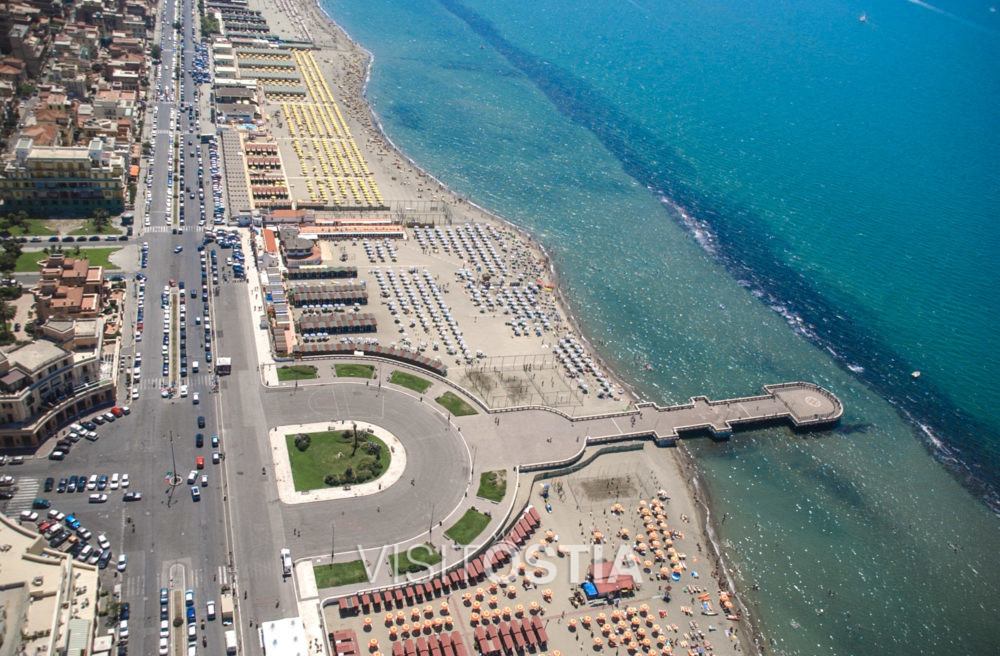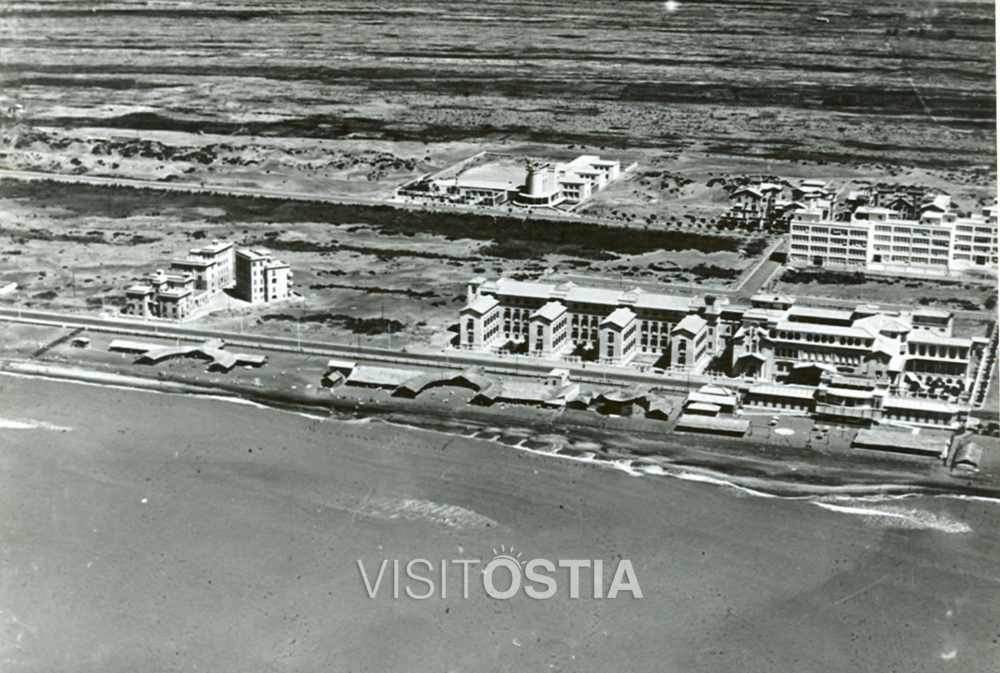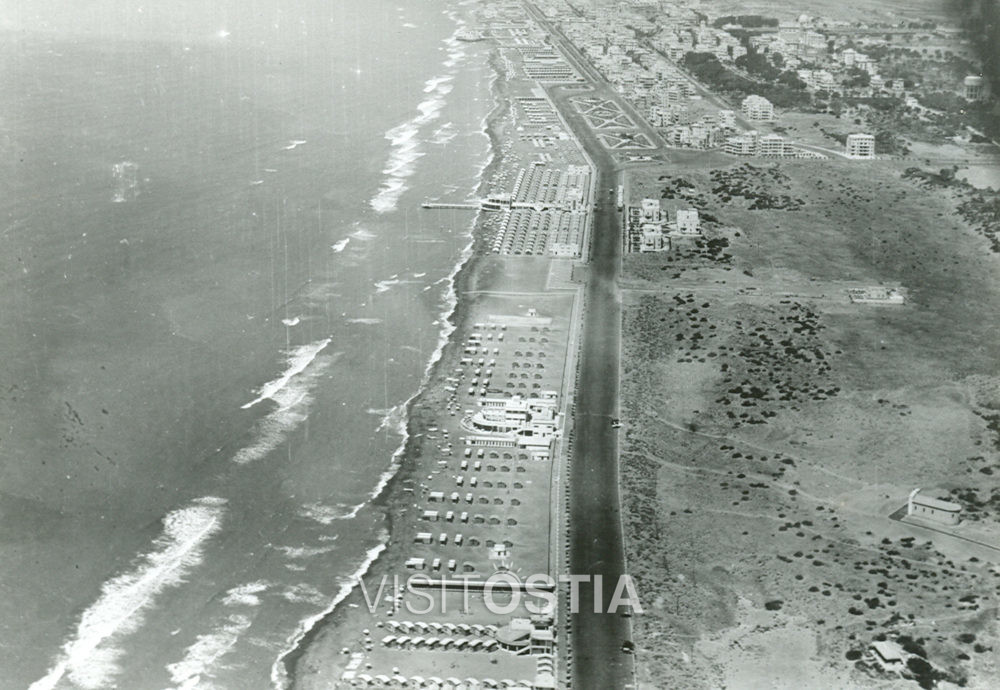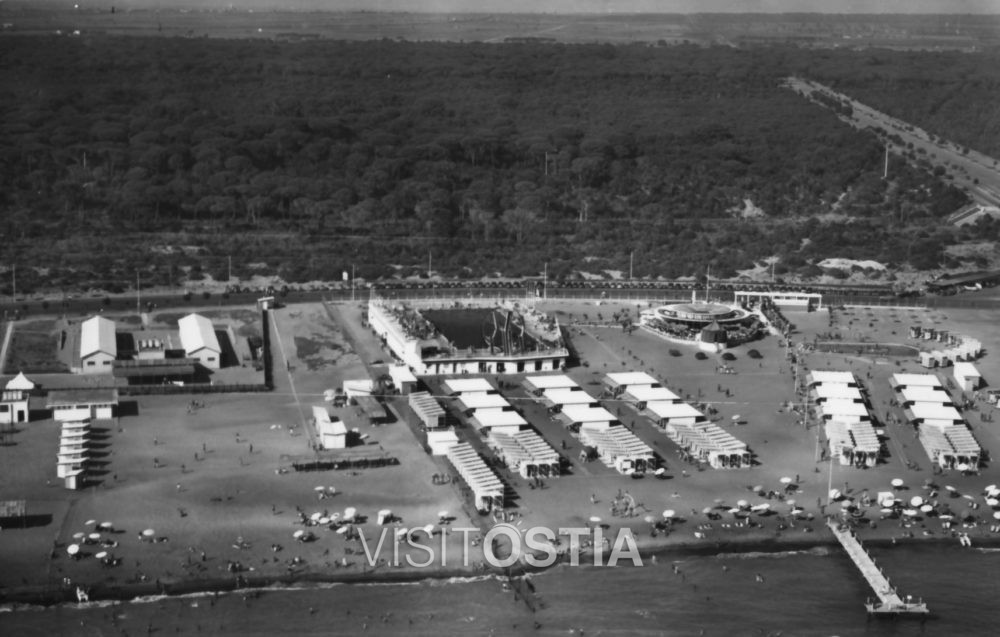For this route, being it between 10 and 6 km long (depending on if you go up to the Presidential Estate or not), we advise you to use a bicyle. Another alternative could be walking or running for the fittest.
Starting point in the Marina, or touristic port.
It was designed in the 90s. it was included in a requalification project of the Idroscalo area. It was unveiled in 2001. It is situated at the most western end of Ostia and it is extremely easy to reach it by car from Fiumicino Airport. It is an ideal place to walk, jog or cycle.
The piers are really full of sailing boats and motorboats, the piers are all on the southern part and they are all in a straight line, about 1.2 km long. It is a pedestrian area and it also hosts a cycling path which continues from the promenade.
The inland part is occupied by a long building, with a long portico, which is inspired to the times of Emperor Claudius. It is full of shops, bars, restaurants where you can eat, drink or have an typical apericena (happy hour with light dinner).
Right next to it is the Mediterranean Habitat Oasis LIPU (a bird conservation reserve), where a coastal pond has been reproduced. It is the home for many species of birds, some of which extremely rare. You can take naturalistic photos following one of the paths inside one of the huts, equipped to directly observe birds. There are also some open air sand not didactic classrooms, which can host various events which tend to raising awareness towards knowledge and protection of all these species.
Leaving the marina you go straight along the promenade, it starts off very wide and it has a cycling path next to it. Here it is probably the best point in which you can stand to enjoy the sunset.
After about 2 km the pavement becomes narrower and it is a bit uncomfortable due to the cycling path.
This ends after about 200 mt. Here there are also some bathing resorts which, apart from the normal beach services, also offer various bars, restaurants and discos. On the inland side are various public and private buildings, some of which are really interesting from an architectural point of view. Unique, for example, is the imposing summer colony Vittorio Emanuele III whose front facade runs facing the sea for hundreds of meters.
Going forward, on foot or on a bike, you get to piazza dei Ravennati which hosts the famous Pontile (the pier). From here, continuing along the promenade, you can look at many buildings which are considered Ostia’s setting. Some of these still have their original look and they let us imagine which was Ostia’s layout and aspect in the years between the two World Wars.
In piazzale Magellano the promenade slightly curves to the right and then it continues eastward. In this area there are many buildings which date back to the 1930s, when the promenade was extended towards Castel Fusano. This allowed the establishment of several bathing resorts, according to modern building criteria. After there is a free beach followed by a bathing resort Il Capanno (formerly Duilio), the Il Delfino, Belsito and Plinius.
The bathing resort which follows (today’s Le Dune and Tibidabo) was originally called Rex. It was named after the Italian ocean liner which in 1935 won the Nastro Azzurro Award as the fastest ship on the route Europe – North America. The project, dated 1933, was by Enrico Del Debbio, a very skilled and famous Roman architect. He also designed the Foro Italico in Rome. This bathing resort has authentic rationalist features and its central part has been copied from naval designs. After many renovations (especially the last one in the 90s) has now lost its initial characteristics.
In front of Tibidabo is the National Swimming Centre, it has an outdoor Olympic pool and two indoor ones. Here all the Italian swimming champions, of any age and category, come to train. It also hosts international and national championships.
Going eastwards you come along Lega Navale bathing resort, whose facade is absolutely original.
At this point, going alongside the canal, you can reach the Borghetto dei Pescatori. After having visited this suggestive little fishermen’s village, you should return on the promenade towards piazzale Magellano. From here you can enter the pine tree forest or you can continue along via Litoranea.
After about 100 mt, you can see the La Pineta bathing resort (today’s La Vecchia Pineta). From here you can also see the Pala Pellicone (also known as Palafijlkam), built between 1990 and 1992 which is the headquarters of the National Federation of martial arts, judo, wrestling and karate.
Along the promenade is a long series of beach resorts, all of a very high standard. The most famous is undoubtedly the Kursaal, opposite the Enalc Hotel, built in the 50s. this hotel was abandoned for many years, but after a radical renovation it now hosts the Degree in Sea Engineering of Roma Tre University.
Right after the Kursaal you find the Rotonda. From here you can continue for another three km up to the Presidential Estate. Otherwise you can go inland towards Castel Fusano pine forest which is the ideal place for running, riding a bicyle or a mountain bike.










